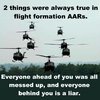Ed Haywood
En-Route
Just had my first lesson today. What a blast!
Got linked up with an Air Force T-6B Instructor Pilot. He gave me some ground school, then we went up in a 2 ship formation. Lead was a PT-23. I was trail in my Super Decathlon, with the IP in my back seat. Spent about 45 minutes working on the basics. The first 15 or 20 minutes were overwhelming. Too many dimensions at once. After a while I started to settle down and got to where I could hold a reasonably tight position in straight and level flight. Turning was quite a challenge though.
Being close enough to another pilot to actually see his facial expressions is extraordinary. I'm not sure I ever want to do any other kind of flying again.
Unfortunately, no pictures to share. There was a lot going on, and we were in formation from about 1 minute after takeoff until just before final approach. Next time.
What a blast!
(did I say that already?)
Got linked up with an Air Force T-6B Instructor Pilot. He gave me some ground school, then we went up in a 2 ship formation. Lead was a PT-23. I was trail in my Super Decathlon, with the IP in my back seat. Spent about 45 minutes working on the basics. The first 15 or 20 minutes were overwhelming. Too many dimensions at once. After a while I started to settle down and got to where I could hold a reasonably tight position in straight and level flight. Turning was quite a challenge though.
Being close enough to another pilot to actually see his facial expressions is extraordinary. I'm not sure I ever want to do any other kind of flying again.
Unfortunately, no pictures to share. There was a lot going on, and we were in formation from about 1 minute after takeoff until just before final approach. Next time.
What a blast!
(did I say that already?)














